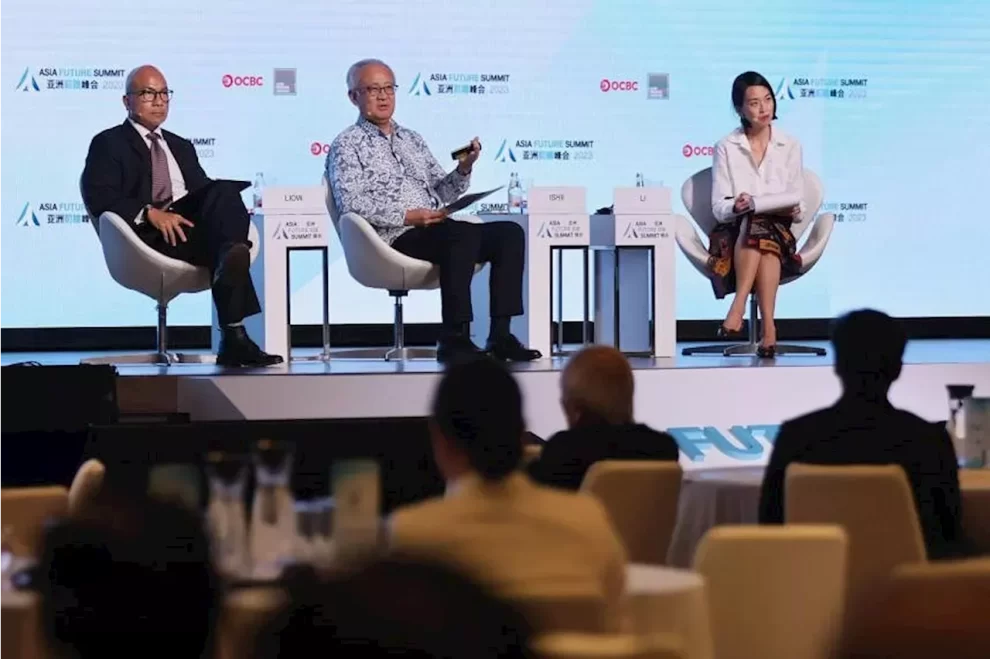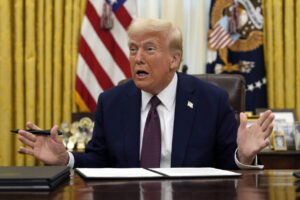SINGAPORE – With South-east Asia again becoming an arena of competition among great powers, it has become more important than ever for the 10 Asean members to remain united, said international affairs academic Joseph Liow.
He noted that Asean states have had to deal with “external powers impinging into our region for a very long time… even before colonialism”.
But the challenges today have become more complex, given the intensifying strategic rivalry between the United States and China, with both trying to exert their influence on the region.
“All the regional states are aware that we in South-east Asia risk being trapped by great power rivalry if we do not work together to exercise and maximise our autonomy,” said the dean of the College of Humanities, Arts and Social Sciences at Nanyang Technological University.
He was speaking at the Asia Future Summit 2023 at the Ritz-Carlton Millenia Singapore on Wednesday during a panel discussion on the shifting balance of power in Asia and the implications for regional diplomacy and security.
The other speaker was veteran Japanese diplomat Masafumi Ishii, formerly ambassador to Indonesia.
The session was moderated by Straits Times foreign editor Li Xueying.
The US, in trying to curb China’s rise, has already rallied its allies and partners in the region – including Australia, Japan, Taiwan and South Korea – to back efforts to restrict China’s ability to import key technologies, reshape supply chains it dominates, and block Chinese military action in the South China Sea.
Asean as a whole, however, wants to maintain relations with both big powers and avoid taking sides.
Prof Liow said having to choose one power over the other is problematic, because “it sets up a very binary world view where the reality is quite the contrary” and forces one to choose between two indispensable partners.
“Asean has always wanted, desired and aspired to have the prerogative to decide and dictate things that happen in the region that impact us,” he said.
“At the same time, we also want to have an open and inclusive region.
“That means bringing on board all these other entities – such as external powers and other regional organisations – who have an interest in South-east Asia, so long as they’re prepared to be constructive participants in the discussion.
“To manage this, Asean needs to be united, Asean needs to be coherent. That is the ultimate challenge for Asean going ahead.”
This also means Asean must be proactive and make a concerted effort to strengthen the notion of Asean centrality, where it acts as the dominant regional platform to overcome common challenges and engage with external powers.
The key, said Prof Liow, is how Asean exerts its influence.
He cited the “intriguing” example of how the Quadrilateral Security Dialogue, which involves the US, Australia, India and Japan, evolved over the years from a US-centric security and defence forum to embrace other forms of collaboration that interest Asean, like vaccine partnership and digital connectivity.
Joint statements issued by Quad leaders will now mention Asean’s outlook on the Indo-Pacific and pay homage to Asean centrality, he added.
He credited the change “in part to a lot of lobbying” by Asean as a group and individually by its member states to impress upon Quad members what Asean deems as important and what needs to be emphasised, such as openness and inclusivity.
Mr Ishii said that Japan, while not wrestling for power in South-east Asia, also wants to strengthen cooperation with Asean states. “To support a strong and united Asean that develops as a whole will continue to be our main policy line.”
But he projected that in 20 years, divisions among member states will increase. Already, he said, while Asean countries constantly say that they have no desire to choose between China and the US or Japan, “you have already chosen, in your mind”.
Citing polls by Japan, he categorised them as: first, the “Big Three” – Indonesia, Vietnam and the Philippines – who constantly rely on Japan and the US and share strategic objectives.
Next are what he referred to as the “Middle Three” – Thailand, Malaysia and Myanmar – those that swing between the two sides depending on the incumbent government’s stance. They are followed by the “Small Three” – Cambodia, Laos and Brunei.
Singapore is a special exception, which “is allowed to bet on both sides”, as it hosts the US navy and air force while pursuing business opportunities and immigration with China.
Asked how the classification was arrived at, and whether it is fluid depending on developments, he said that it is based on what Japan sees “on the ground”, and reiterated that his country prioritises a united Asean.
Mr Ishii also emphasised the importance of working with Asean to engage the US in a more tangible way, such as by getting the US back into the Comprehensive and Progressive Agreement for Trans-Pacific Partnership, a multilateral free trade agreement. The Trump administration had withdrawn from it in 2017.
“Without market access, my sense is South-east Asia will never take a US comeback seriously,” he added.
Co-organised by The Straits Times and Lianhe Zaobao, Asia Future Summit 2023 ends its two-day run on Thursday.
- OCBC is the presenting sponsor for the Asia Future Summit 2023. The event is also supported by Guocoland and Kingsford Group.
Source : The Straits Times










